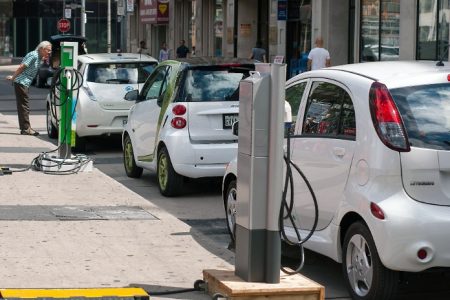June 11, 2017 – The Electric Vehicles Initiative (EVI) is a policy forum focused on the worldwide adoption of electric vehicles (EVs). Formed in 2010 its membership includes Energy Ministers from Canada, China, Finland, France, Germany, India, Japan, Korea, Mexico, the Netherlands, Norway, South Africa, Sweden, the United Kingdom and the United States.
In 2016 the number of EVs on the road around the world broke the 2 million mark, an increase of 60% over 2015. But that number represented a mere 0.2% of the total number of passenger vehicles in circulation on the planet. The challenges that EVs face remain substantial. They include:
- range anxiety with most EVs designed for urban driving and few having the range to do cross-country trips.
- lack of an EV recharging infrastructure which when combined with range anxiety makes buying an EV more difficult for the average consumer.
- the premium cost of EVs puts them out of the range of low-income purchasers even with government subsidies.
- hybrid vehicles present a more palatable alternative to many because the combination of a gasoline engine and electric motor addresses range and infrastructure issues.
Because of these issues, EVs are seen by the majority of consumers as nice to have but not something they, themselves, would purchase or lease. The majority are still in “wait and see” mode.
That’s why the EVI has put together the EV30@30 campaign. With transportation around the globe contributing to 25% of global greenhouse gas (GHG) emissions, getting people out of gasoline and diesel-powered vehicles and into EVs is seen as mission critical by the Energy Ministries of the 15 member countries.
The EV30@30 mission is to get vehicle market share of EVs up to 30% by 2030. That’s a 1,500% increase from the end of 2016 numbers. To achieve this EVI members plan to:
- implement supportive government policy at all levels from federal to state to municipality, to encourage consumers to purchase EVs using tax incentives, rebates, preferential use of toll roads and lanes, parking discounts and other cost-saving perks.
- have governments at all levels switch their fleets to EVs to achieve overall carbon reduction targets from operations.
- have a rapid buildout of public EV charge stations.
- encourage business to install charge stations on their premises
- encourage business to provide incentives to employees who purchase EVs.
- encourage business to increase the percentage of EVs deployed by the business in its operations.
- provide incentives to fleet and lease operators to offer more EV choices to consumers.
- publish more information in print and online, and hold public forums for the public to learn about the environmental advantages of moving from gasoline and diesel to green EV alternatives.
Before the arrival of Donald Trump, some progress had been made in the United States. For example, 24 states and local governments had joined the federal government in a pledge to electrify their operations’ fleets.
The United Kingdom government before the Brexit vote committed to having a zero-emission fleet in operation by 2050. There appears to be no change in policy post-Brexit.
Canada has pledged operational carbon pollution reductions of 40% by 2030 with strategic investment in an EV fleet and the building of a government recharging infrastructure. Actions are also being taken by Canadian provinces and municipalities.
In other EVI member countries, we see similar initiatives with Norway achieving 4% EV market share, the highest number of EVs per population of any member country.
In the last week the member nations participating in the EV30@30 initiative got together in Beijing, China at the Clean Energy Ministerial, a global forum where each reported on progress to date and furthered their commitment to GHG reductions throughout their economies, not just in the deployment of more EVs.










